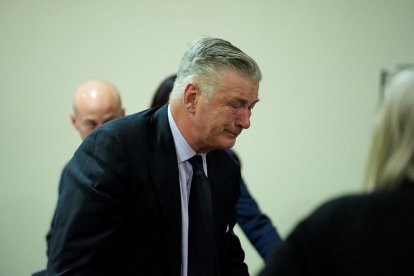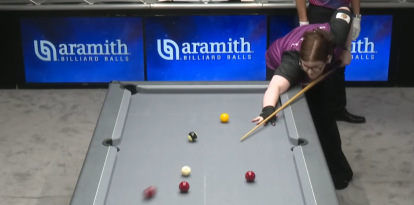Judge dismisses Alec Baldwin's case after defense shows prosecution withheld evidence
The actor broke down in tears and hugged his wife after the dismissal announcement.

Actor Alec Baldwin is visibly emotional after the dismissal of the 'Rust' case against him
In a surprising and unexpected court decision, Judge Mary Marlowe Sommer dismissed the involuntary manslaughter charge against Alec Baldwin after the defense alleged prosecutorial misconduct.
Baldwin, noticeably emotional, broke down after Judge Marlowe Sommer dismissed the case. The actor was charged because of the 2021 death of cinematographer Halyna Hutchins on the set of the film "Rust." If found guilty, he could face an 18-month jail sentence.
The case was dismissed after Baldwin's defense filed a motion arguing misconduct by state investigators and prosecutors, who decided to withhold crucial evidence.
The judge sided with the defense, asserting that the prosecution failed to disclose evidence properly and dismissed the case with prejudice. That is, it cannot be refiled.
"The state's willful withholding of this information was intentional and deliberate," Sommer said. "If this conduct does not rise to the level of bad faith, it certainly comes so near to bad faith as to show signs of scorching prejudice."
"There is no way for the court to right this wrong," the judge stated when she announced the dismissal.
Immediately, the actor burst into tears and hugged his wife Hilaria, who accompanied him during the process.
BREAKING: Actor Alec Baldwin's criminal case has been dismissed after new evidence emerged that wasn't disclosed to the defense.
— Collin Rugg (@CollinRugg) July 12, 2024
Baldwin was seen sobbing when the announcement was made.
"One of the two special prosecutors in the Alec Baldwin trial, prosecutor Erlindo Ocampo… pic.twitter.com/3pyetXwDZQ
Why did the judge dismiss the case?
The decision to dismiss the case came after a frantic day at the First Judicial District Court of Santa Fe. The day began with defense attorney Luke Nikas accusing the prosecution of concealing evidence that prop dealer Seth Kenney was the source of the live ammunition.
This motion forced the judge to send the jury home so she could hold a last-minute hearing that could change case's fate. It did.
The lead prosecutor, Kari Morrissey, had to call herself as a witness to explain the state's error.
"I decided not to take any steps to collect this ammunition because it was in Arizona, had never come to New Mexico and didn't match the live rounds on the set of ‘Rust,'" Morrissey said.
Baldwin's legal team argued that investigators and prosecutors withheld evidence related to the actual source of the ammunition linked to Hutchins' death on the set of the movie "Rust."
In the same case, but in a separate trial, the gunsmith, Hannah Gutierrez Reed, was sentenced to 18 months in prison for putting a live round in a revolver that the actor fired, causing Hutchins' death and injuring director Joel Souza.
During Gutierrez Reed's trial last March 6, retired police officer Troy Teske, a family friend of the gunmaker's father, walked into the Santa Fe County Sheriff's Office and turned over a collection of bullets to Marissa Poppell, the crime scene technician.
Teske claimed the bullets came from prop dealer Kenney and matched the bullet that killed Hutchins.
Poppell admitted in court Friday that she did not inventory Teske's evidence under the Gutierrez and Baldwin case but under a different case number. The defense, moreover, claimed that it did not receive a supplemental report on the new evidence. This situation was proven at Friday's hearing.
In addition, Alexandria Hancock, the Santa Fe County sheriff's corporal and lead investigator in the case, said at the hearing that this decision was made in consultation with the prosecutors.
"Okay. So you, you all had discussions about what to do with what he [officer Teske] dropped off?" Judge Marlowe Sommer asked.
"Yes," Hancock replied.
"And you all agreed to put it in the separate file?" the judge insisted, pressing the key point of the hearing. "Yes," Hancock replied again, exposing the state's negligence, which also failed to store the new evidence along with other evidence in the case.
RECOMMENDATION





















